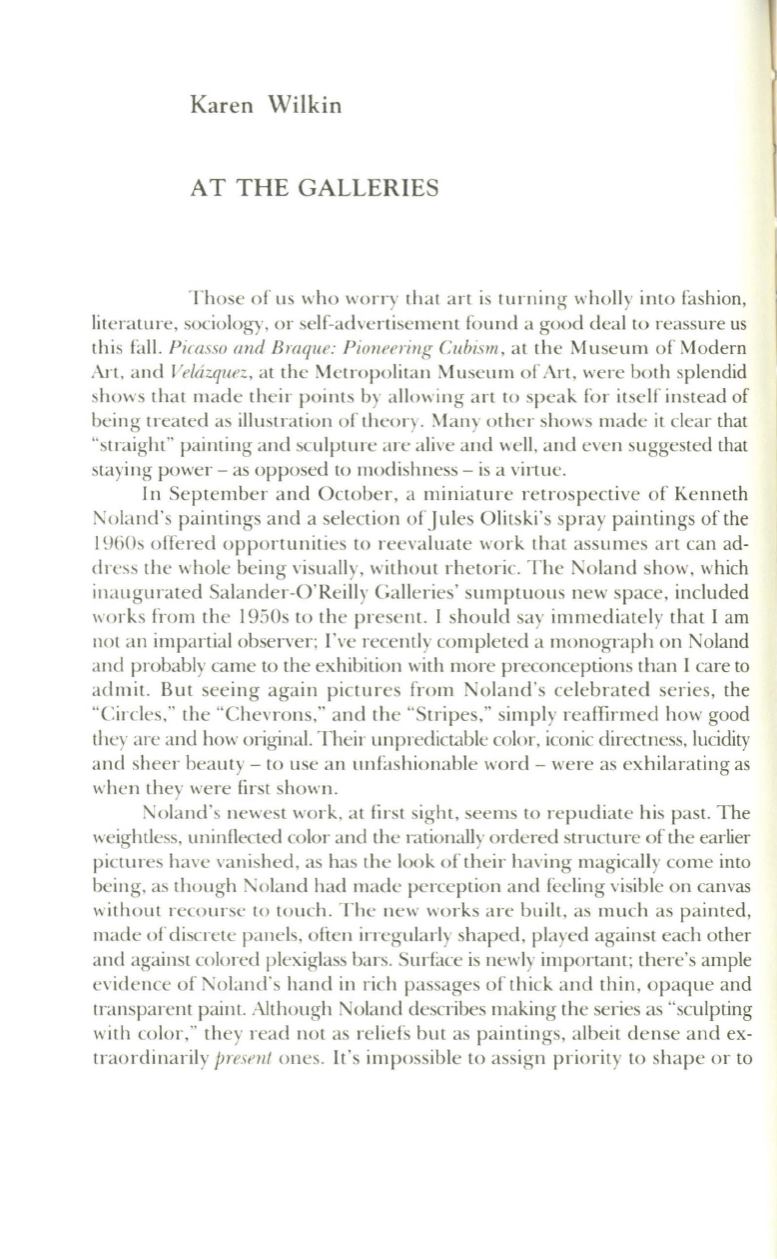
Karen Wilkin
A
T THE GALLERIES
Those of us who worry that art is turtling wholly into fashion,
literature, sociology, or self-advertisement found a good deal to reassure us
this
f~t11.
Picasso and Bmque: Pioneering Cubism,
at the Museum of Modern
An,
and
Velazquez,
at the Metropolitan Museum of Art, were both splendid
shows that made their points by allowing art
to
speak for itself instead of
being treated as illustration of theory. Many other shows made it clear that
"straight" painting and scu lpture arc alive and well, and even suggested that
staying power - as opposed to modishness - is a virtue.
In September and October, a miniature retrospective of Kenneth
Noland's paintings and a selection ofJules Olitski's spray paintings of the
I
~)GOs
offered opportunities to recvaluate work that assumes art can ad–
dress the whole being visually, without rhetoric. The No land show, which
inaugurated Salander-O'Reill y Ga lleries' sumptuous new space, included
works (i'om the 1950s
to
the present. I shou ld say immediately that I am
not an impartial observer; I've reccntly completed a monograph on Noland
and probably came to the exhibition with more preconceptions than I care to
admit. But seeing again pictures from Noland's celebrated series, the
"Circles," the "Chevrons," and the "Stripes," simply reaffirmed how good
they are and how original. Their unpredictable color, iconic directness, lucidity
and sheer beauty - to use an unfashionable word - were as exhilarating as
when they were first shown.
Noland's newest work, at first sight, seems to repudiate his past. The
weightless, uninflected color and the rationally ordered structure of the earlier
pictures have vallished, as has the look of their having magically come into
beillg, as though Noland had made perception and feeling visible on canvas
without recourse
to
touch. The new works are built, as much as painted,
made of discrete pallels, often irregularly shaped, played against each other
and against colored plexiglass bars. Surface is newly important; there's ample
evidence of Nolalld's hand in rich passages of thick and thin, opaque and
transparent paint. Although Noland describes making the series as "sculpting
with color," they read not as relief's but as paintings, albeit dense and ex–
traordinarily
presfIlf
ones. It's im possible to assign priority to shape or to


